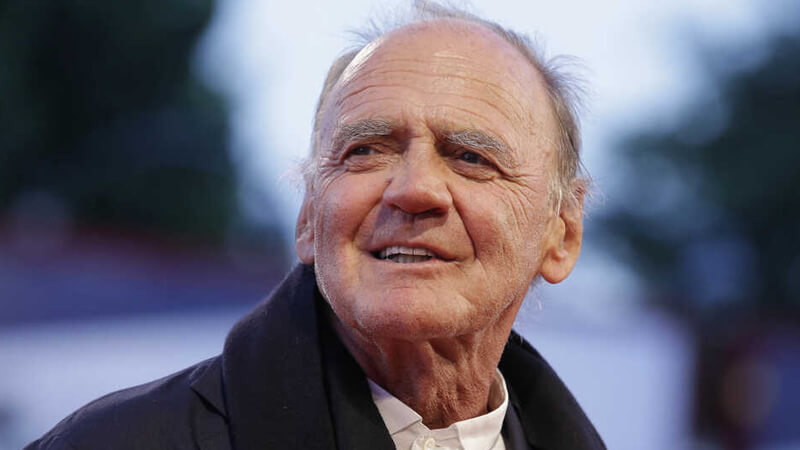Biography of Bruno Ganz:- A Swiss actor of long standing and renowned international experience, considered one of the most emblematic Central European actors, he has worked regularly with the most representative filmmakers of the so-called “author cinema” such as Wim Wenders, Theodoros Angelopulos and Alain Tanner .
Biography of Bruno Ganz
- Born:- 22 March 1941 (age 76), Seebach
- Height:- 1.68 m
- Partner:- Ruth Walz
- Awards:- David di Donatello for Best Actor
- Children:- Daniel Ganz
Bruno Ganz was born in Zurich, Switzerland, on March 21, 1941. After successfully completing his maturity (university entrance examination), he performed military service in Switzerland and began his theater studies in the Bühnestudio of his hometown.
See Also: Biography of Jeremy Irons
In 1962 he moved to Germany to expand his knowledge in dramatic art. Thanks to the excellent work of his professors Peter Zadek and Kurt Hübner, he soon became famous for his acting skills and began his career as an actor on theatrical stages.
During the decade of 1960 worked in diverse productions for the Swiss and German televisions (generally, versions of theatrical assemblies). In 1967 he met director Peter Stein, with whom he co-founded the Schaubuehne company in Berlin five years later, which has become an example of audacity and independence of judgment.
In Schaubuehne he coincided with other greats of the Central European scene, such as the actors Jutta Lampe, Edith Clever and Otto Sander (his “angelic colleague” in Wim Wenders’s ” The Sky over Berlin” ) or the stage designers Klaus Michael Grüber and Luc Bondy.
In 1972 he integrated the cast of the world premiere of the work of Thomas Bernhard Der Ignorant und der Wahnsinnige (The ignorant and the insane), under the direction of Claus Peymann and in the framework of the Festival of Salzburg.
The result was a barrage of praise from both critics and the public as well as from the writer himself: the usually irascible Bernhard went so far as to explicitly save “the great Bruno Ganz” in the diatribe contained in the novel Wittgenstein’s nephew , Against the actors who had interpreted their works in Austria and Germany. In 1973, the Theater Heute magazine awarded him the Distinguished Actor of the Year award.
Although curiously at the age of nineteen he appeared in two films by Karl Suter ( Der Herr mit der schwarzen Melone and Chikita ), it was not until 1975 that he truly began his career as a film actor.
This happened when the great French filmmaker Éric Rohmer proposed to work in The Marquise of O . In order to properly prepare the filming, Ganz decided to leave the Bühnestudio, an attitude that Rohmer awarded by giving him one of the most memorable entries on the scene of European cinema of the decade.
This historic film would receive the Jury Prize at the Cannes International Film Festival and launched Ganz as one of the most sought-after European actors of the next decade.
Faithful to Author Cinema
The writer Peter Handke took to the cinema his text the woman left-handed , and counted on the participation of Ganz. The actor would be considered, since then, a firm connoisseur of the handkiano universe, as it would very well demonstrate in other occasions a posteriori.
In 1977 Wim Wenders called him to lead, along with Dennis Hopper, his very particular adaptation of The American Friend: The Ripley Game , Patricia Highsmith’s novel.
Well received in Cannes, so much liked the director Franklin S. Schaffner that invited Ganz to shoot The Children of Brazil , the first American production of the actor. Not in vain one of the most outstanding qualities of Bruno Ganz has always been his ability to work in several languages.
Austrian director Werner Herzog also claimed his presence in Nosferatu (1979), a decadent remake of the film of the same name by Friedrich Wilhelm Murnau, in which the histrionic Klaus Kinski played the leading vampire role.
Herzog was able to intuit that Ganz, as opposed to the “demonic” Kinski, had all the gifts to embody candor, innocence and moral rectitude. Certainly, many of his roles in film and theater have contributed to maintaining this image.
The 1980s opened with two notable film projects. On the one hand, Volker Schlöndorff’s Circle of Deception , along with Hanna Schygulla, and another On the White City , by the Swiss Alain Tanner. For some, this is Ganz’s best work; In it gives life to a sailor who decides to abandon his previous life to stop in Lisbon to contemplate how the time, and his own life, pass before his eyes without that he wants to make any gesture to intervene.
Despite his activity on the big screen, Ganz never abandoned his work on the stage or in the television sets.
In spite of this dynamic of work, it was not until 1987 when many spectators knew the work of Bruno Ganz. And is that the success and controversy reaped by the film The sky over Berlin even went so far as to generate a sweetened Hollywood remake with Meg Ryan and Nicolas Cage as protagonists.
The film, again under the direction of Wim Wenders, was a joint project with another old acquaintance of Ganz, Peter Handke, who wrote a poetic and vigorous script.
Ganz was able to endow the world with an enormous humanity and transcendence the story of the angel Damiel, who renounces immortality to know the human and mortal experience when falling in love with a trapeze artist.
In the 1990s Ganz continued to alternate his work on stage with filming for the most eminent names of European cinema. In this context are placed their interpretations in films like So far, so close (1992), second part of the sky on Berlin.
The absence (1993), again with Handke, and, especially, The eternity and one day (1998), of Theodoros Angelopulos (Palm of Gold in Cannes), work that was the meeting of two of the most respected figures of the cinema Of author.
In 1996 Ganz received a less surprising award, the Iffland-Ring, which was awarded to him as “the greatest living personality of German-speaking theater,” an award to which a year later was awarded by the International Television Festival of Barcelona for his work on the TV movie Anwalt Abel – Ein Richter in Angst , by Josef Rödl, in which he played a judge , Dr. Crusius, hated by his colleagues.
In 2000, Ganz reunited with Peter Stein, who after ten years succeeded in representing Fausto’s integral . The role of the mythical Goethean hero fell to the Swiss actor, strenuous work if one considers that the duration of the assembly reached the thirteen hours.
In that same year, his participation in Pain, tulipes et comédie , by Silvio Soldini, earned him a David di Donatello in Italy, as well as the prize for best actor in Switzerland.
Nevertheless, the name of Bruno Ganz transcended the scope of the cinema of author to enter in the one of the most vivid controversy when in 2004 (after to shoot to the orders of Jonathan Demme the messenger of the fear ) accepted to interpret the paper of Adolf Hitler in The Oliver Hirschbiegel film The Sinking (Der Untergang).
The film’s peculiar focus, partly based on the memoirs of the dictator’s secretary, Traudl Junge, offered an unprecedented vision of Hitler , enhancing the hypothetical “human aspect” of whoever was responsible for the annihilation of millions of people during World War II . Object of lively discussion in all the countries in which it was released, the film generated, and continues generating, ignited disputes.
Wim Wenders himself, personal friend of Bruno Ganz, was one of the most prominent spokesmen of the critical sector with the partiality of the film.
Regarding the amorality of his position, Ganz stated: “When I heard such comments for the first time I felt offended, because what I did was a kind of documentary as far as I am concerned.” Unaware of other cinematic versions of Hitler’s history (although “a determined admirer of the portrait by Charlie Chaplin in The Great Dictator “), Ganz based his characterization on archival films in which the Führer appeared in person.




